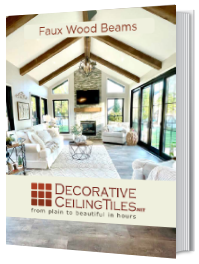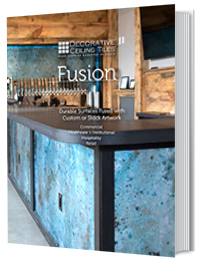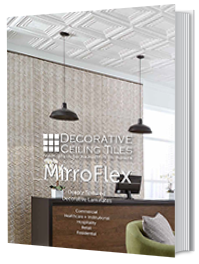Pros & Cons of Using Tin Ceiling Tiles as a Backsplash
Written by Milan Jara on 8th Jul 2021
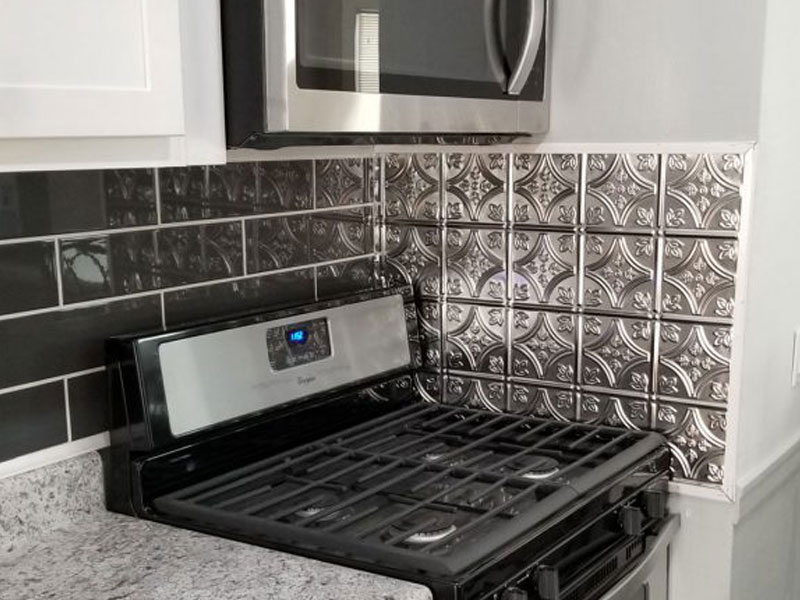
Pros & Cons of Tin Backsplashes
Placing tin tiles on your ceiling isn't the only thing you can use them for. Another option is to use your ceiling tiles as a backsplash in your kitchen! Doing this can help protect walls from splashes at a stove and looks beautiful. In this guide, we will weigh the pros and cons of a tin backsplash and see whether they're a valuable investment for your home.
Where to have a Tin Backsplash?
These types of tile backsplashes can be placed in any room, and are ideal for areas of high use, such as the kitchen. Using tin ceiling tiles as a backsplash helps keep walls clean and free of water and oil residue.
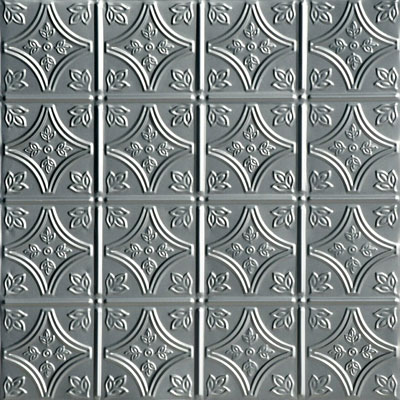
What are Tin Tiles?
Tin is a highly supple metal that can be stamped with a wide range of decorative patterns. Finishes range from clear to burnished copper, aluminum, and metallic brass. Simple installation makes these a good choice for DTI kitchen renovations.
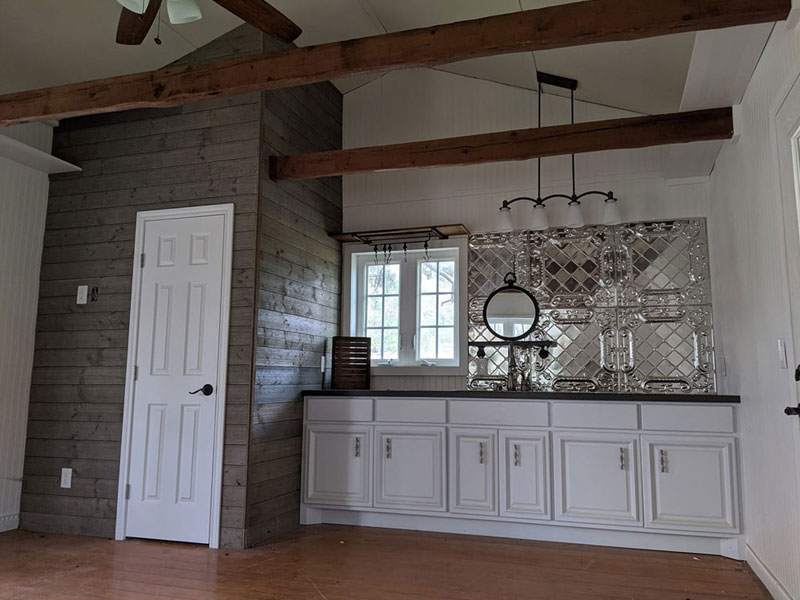
Pros
- Easy to Work With:
Tin tiles are thin and light. It makes it incredibly easy to cut them with tin snips or a heavy-duty paper cutter. However, despite their lightweight being a huge plus, sometimes it can be a slight drawback. If you don't handle them with care, there is a chance of them bending easily, so it's important to treat them warily while you carry out the installation.
- Non-Flammable:
Tin is a great material for a backsplash behind a kitchen stove - where hot liquids splash frequently. Installing tin tiles for a backsplash in this area tells people that not only are you a creative decorator but that you also value safety.
- Cost-Effective:
Tin tiles for a backsplash is not the least expensive option, but it's still an option that suits those who are on a budget, as they come at a price of as little as $3 per square foot. Another reason these tiles are less expensive than other materials is that they don't require a professional installer.
- Easy to Clean and Maintain:
Unlike other surfaces - like wood and ceramic, tin is nonporous and provides no small crevices for dirt and mold to form. Tin tiles come with a solid finish that's easy to clean using a small amount of soap and water.
- Eco-Friendly:
Typically, tin tile manufacturers fabricate their tin tiles using recycled metal. Items like food cans may have been in your house one day, but then return another day as this type of tile!
It is the beauty of using recycled material for decoration. Even if you are one day bored of your backsplash, and you want to throw the tiles away, it should be a good feeling to know that these tiles won't just sit in a landfill, they will provide somebody else the same feeling you once had when you first purchased them.
Cons
Although they have their fair share of pros, some drawbacks need to be addressed before an investment is ever made. As tin tiles are light in weight, for instance, they may not be the best option for you if your kitchen has a draft and needs additional thermal insulation. Other issues include:
- Tin is Eventful:
This type of tile is unique and tends to feature bright colors and ornate designs can enhance visual stimulation. If your kitchen contains a wood floor, a tile countertop, and other features that draw attention, adding a kitchen backsplash might just overfill your kitchen with visual overdrive.
Adding a tin backsplash is best mixed with fewer design elements, as it works best by being one of the focal points for your kitchen.
- Corroding:
Leaving tin exposed can cause rust. Even though there is a solution like a corrosion-resistant finish that you can apply onto each tile before installation, common households use acidic liquids like vinegar, coffee, and lemon juice - and these can reach beneath this finish and damage the tin inside.
Although you can remove rust, if tin corrodes, then it becomes challenging to fix, and that means if your corrosion damages your backsplash panel, it may be time to replace it altogether.
- Dents:
It's unfortunate, but if tin gets even a slight knock, then a dent may arise. As tin tiles are lightweight, the metal is fragile. Therefore, dents can occur, and they are difficult to repair or remove.
How to get the best out of Your Tin Tile Backsplash?
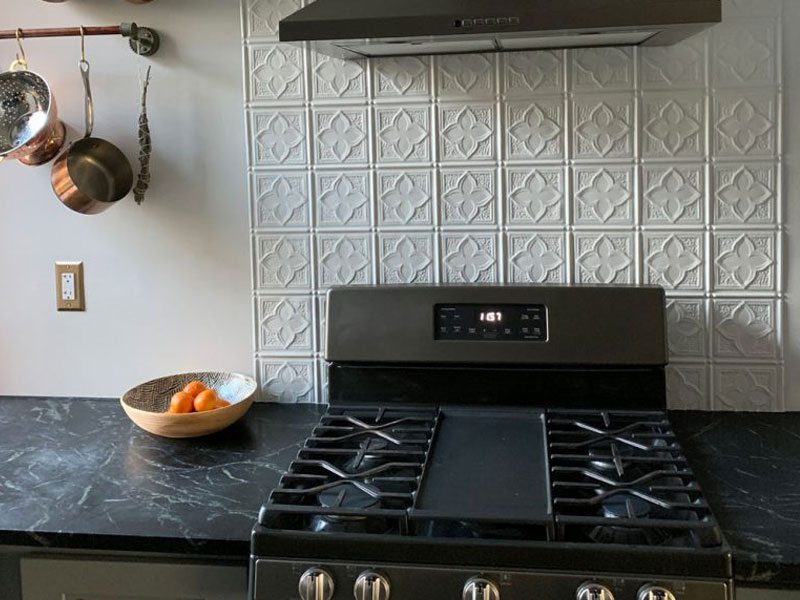
Tin tiles for a backsplash are certainly a worthwhile investment, but it's important to know that you shouldn't just sit back and allow it to do its job. Once you have the backsplash fitted, you will need to take great care of it, especially if you plan on having it for years to come.
Perhaps the most important aspect to stay on top of is the maintenance work for your tin ceiling tile backsplash. Even though they don't require a large amount of maintenance, it still needs some, and that's important enough. For a good, solid clean, especially if there are oil and grease splashes, use a little dish detergent and a sponge.
Avoid acidic cleaners that contain vinegar and lemon juice, and you'll be on your way to maintaining your backsplash adequately.
Moreover, to keep your tin backsplash looking shiny, keep on top of the rust that has the potential to show. Start by using a protective finish, but because this doesn't last forever, make sure you check on your tiles and have a rust remover ready when it's needed.


